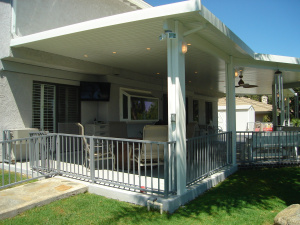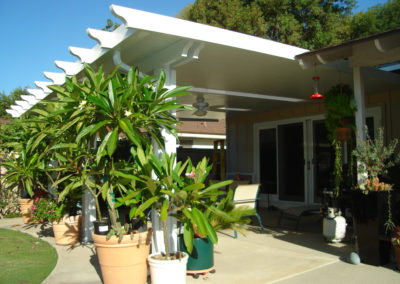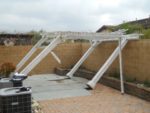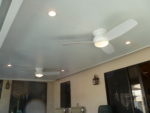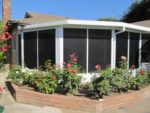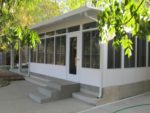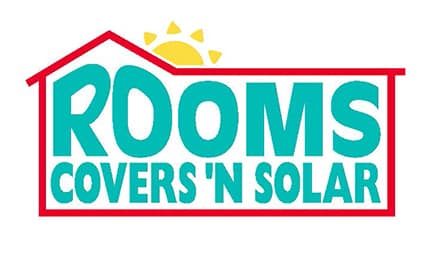How solid should it be?
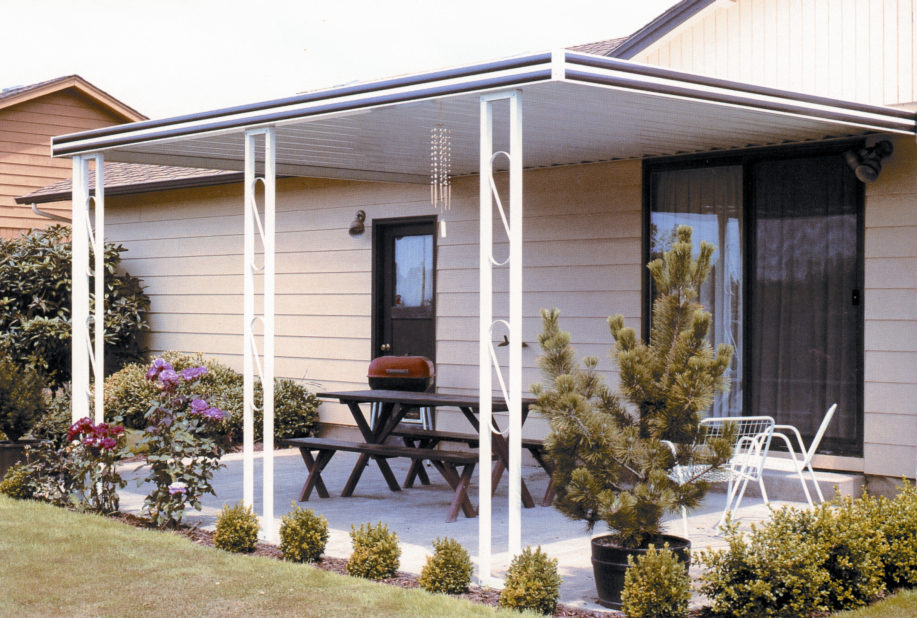
Patio covers come in many styles, but basically two types…open lattice and solid. There are some motorized products that open and close, but we’ll leave those out for this particular discussion. Actually, since this particular topic is, essentially, “Which solid should I buy?” I’m leaving lattice particulars for another time as well. Solid patio covers provide complete shade, as opposed to the aforementioned open lattice, and currently come in three basic styles. These are the standard, a.k.a traditional, patio cover, along with the flat pan patio cover and the insulated roof panel (IRP) patio cover. Each has their merits and drawbacks, which I’ll touch on here.The standard patio cover has been around for a long time, and is still what many people think of when patio covers are brought up. They have a heavier, more industrial look, with “W” or “double V” pan designs. The top structure is usually flat finished with no embossing, and comes in a limited number of colors. Scroll posts are often seen holding these covers up, although there some more modern options available these days. Standard covers are usually the most economical option when purchasing, because the manufacturing process has less steps, and there is little or no trim on the basic model.The flat pan patio cover is the next step in the evolution of this kind of structure. Aluminum is embossed with a wood grain texture and roll formed into six-, eight-, or twelve-inch panels or “pans” that interlock to form the roof of the patio cover. Paint is baked on at the factory, often with additives to resist wear and fading, giving the opportunity for the manufacturer to offer a limited lifetime warranty. These covers require minimal care compared to their wooden counterparts…no rot, sagging, peeling paint, etc. Just wash it once in a while to maintain its gloss. Somewhat more expensive than the standard cover, the flat pan style offers a much more modern look, with several trim styles and colors to more fit an individual home and backyard setting.
Then there is the insulated roof panel, or IRP patio cover. Considered the most “finished”looking of all the choices, the IRP option is also the most expensive of the three. It does offer a smoother presentation, with two- to four-foot wide panels of foam insulation bonded with embossed aluminum skins, so there is only one joint every few feet instead of every half-foot or so. The thickness of the panels depends on the projection of your cover…the further it extends from the house, the thicker it needs to be. A big plus for some people who choose the IRP cover is that you can walk on it. This is possible with the flat pan if you use a board or sheet of plywood to spread your weight, but being able to climb up and clean or retrieve objects without having to take extra measures is a bonus for some.
So which to buy? I hate to take the cop out that it comes down to personal preference, but now at least you have some checks and balances to apply. Cost, style and durability are the most frequent topics discussed during the sales process, and this purchase essentially comes down to your budget and desires along those lines. So, visit the websites of the companies who make the products to compare, visit any available showrooms to see and touch the products for yourself, and then have a representative come and give you that free estimate. Have your questions ready, be comfortable with the answers they give you, and enjoy your patio cover purchase for many years to come!
